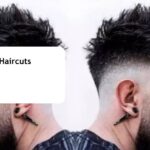Discover the ultimate guide to fade haircuts with our detailed infographic. Whether you’re new to fades or looking to perfect your style, our visual guide makes choosing the right fade effortless and fun.
We know that selecting the perfect fade can be tricky. That’s why we’ve broken down each style step-by-step, from low fades to high fades, highlighting key features and benefits. Our infographic ensures you understand every aspect, making it easier to communicate your desired look with your barber.
Transform your hairstyle with confidence. Explore our guide fade haircuts infographic and embark on your journey to a sharper, more stylish you.
Types Of Fade Haircuts
Fade haircuts offer a versatile range of styles to match any preference and face shape. Each type provides a unique blend of length and tapering for a sharp, stylish look.
Low Fade
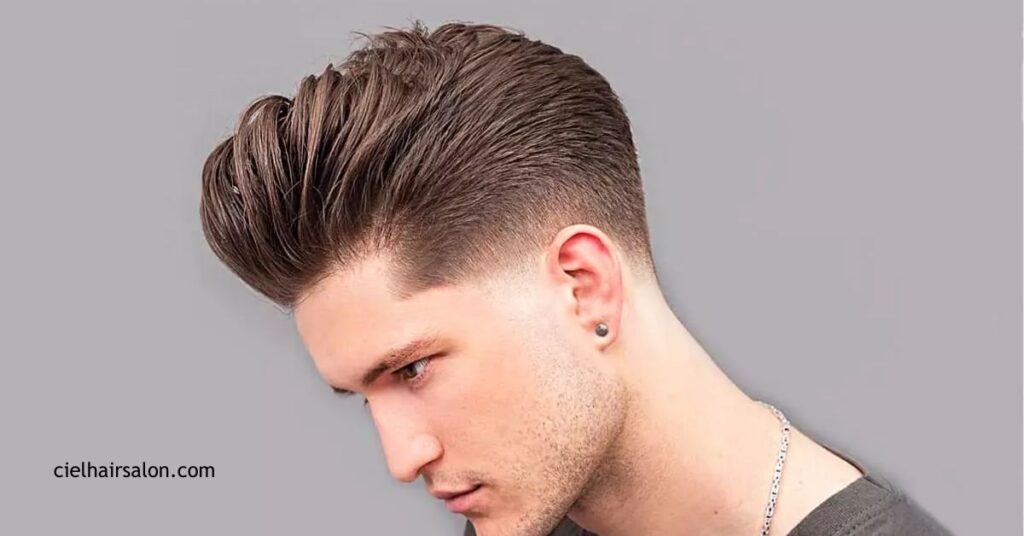
Low fades start just above the ears, gradually blending into the hair on top. This subtle transition creates a clean and polished appearance, perfect for those who prefer a more conservative yet stylish haircut. Whether you have curly or straight hair, the low fade complements most textures seamlessly.
Mid Fade
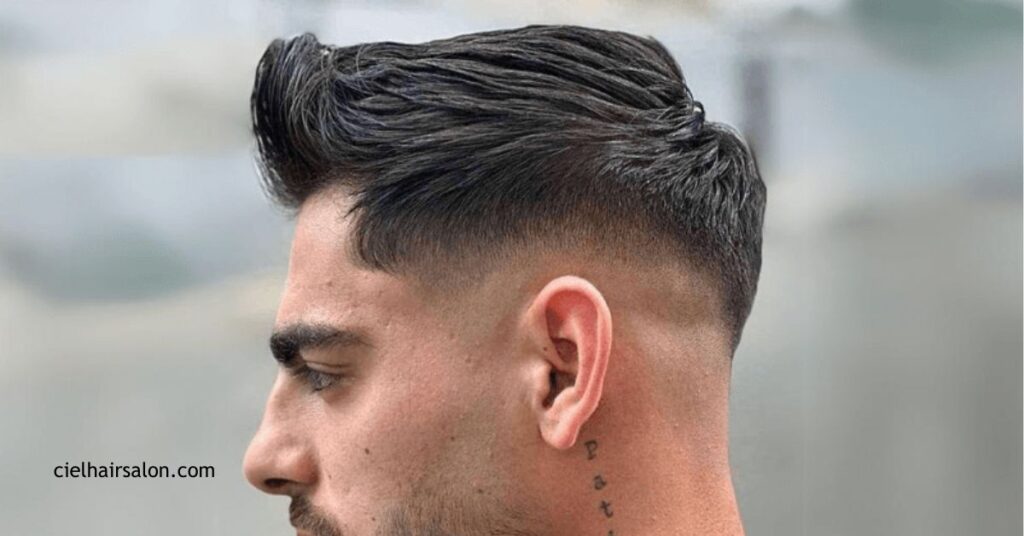
Mid fades strike a balance between low and high fades, beginning around the temple area. This versatile option adds dimension and contrast to your hairstyle, making it suitable for various hair types and lengths. With its medium gradient, the mid fade offers a modern and refined look that works well in both casual and professional settings.
High Fade
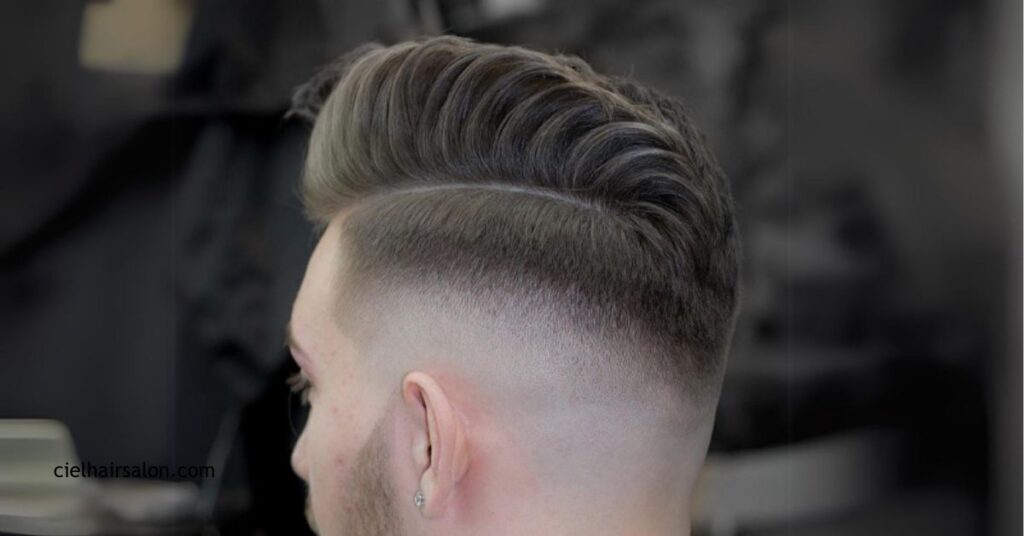
High fades begin high on the sides and temples, creating a bold and dramatic contrast with the hair on top. This striking style is ideal for individuals looking to make a strong statement with their haircut. The high fade highlights facial features and adds an edgy touch, making it a popular choice among trendsetters.
Taper Fade
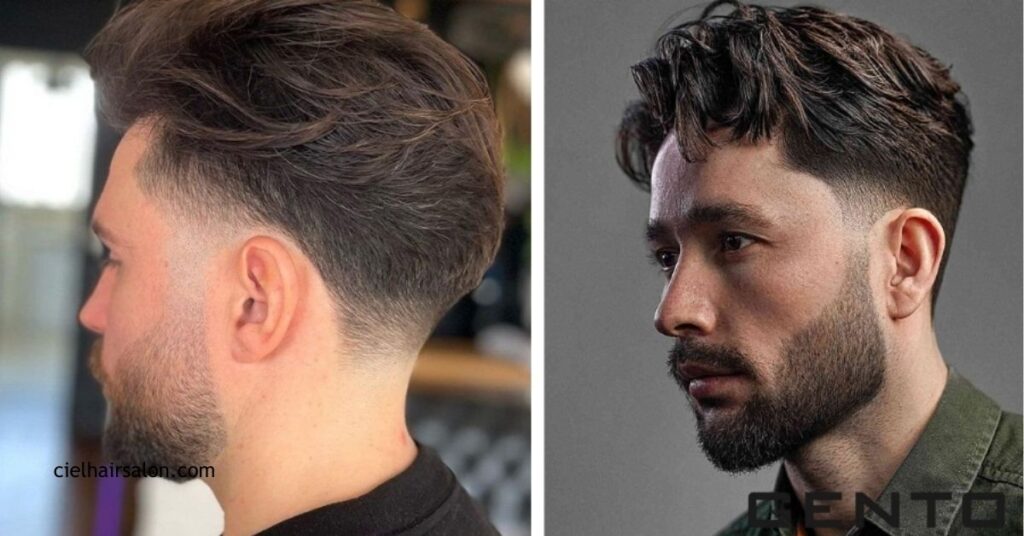
Taper fades feature a gradual decrease in hair length, smoothly transitioning from longer hair to shorter lengths near the neckline. This classic and timeless style is perfect for those who prefer a neat and understated look. The taper fade works well with various hairstyles, providing a clean finish without being too drastic.
Creating The Perfect Fade
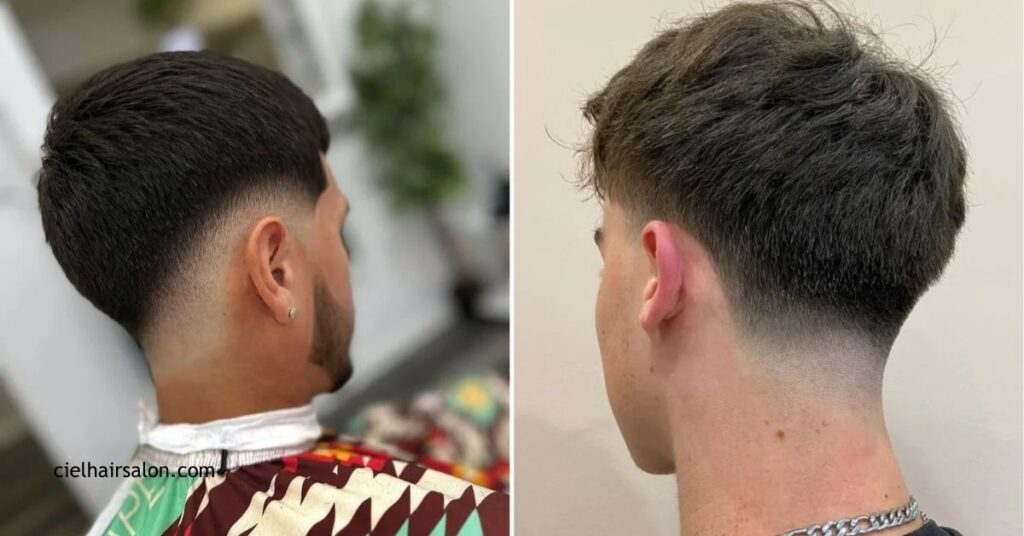
Crafting the perfect fade requires attention to detail and the right approach. Let’s jump into the essential aspects to achieve a flawless look.
Selecting The Right Fade Style
Choosing the ideal fade style sets the foundation for your haircut. We consider various factors to match your preferences and hair type.
- Assessing Hair Texture: Determine whether your hair is straight, wavy, or curly to select a fade that complements its natural pattern.
- Evaluating Face Shape: Match the fade style to your face shape. For instance, a high fade suits oval faces, while a low fade enhances square faces.
- Considering Lifestyle: Opt for a fade that fits your daily routine. A mid fade offers versatility, suitable for both casual and professional settings.
- Personal Preference: Decide between a subtle taper or a bold contrast based on your personal style and how statement-making you want your haircut to be.
Tools And Techniques For Fading
Equipping ourselves with the right tools and mastering essential techniques ensures a sharp and even fade.
- Selecting Clippers: Use clippers with multiple guard sizes. Guards ranging from #0 to #4 provide the necessary length variations for a smooth transition.
- Choosing Scissors: Invest in quality scissors for precise trimming and detailing, especially around the edges and neckline.
- Mastering Clipper Techniques: Start with a longer guard and gradually switch to shorter ones. Move the clippers upward to blend the hair seamlessly.
- Utilizing a Comb: Keep the hair in place and guide the clippers accurately. A comb helps achieve uniform lengths and avoids uneven patches.
- Employing a Handheld Mirror: Ensure all angles are covered by using a mirror. This allows for better visibility and accuracy, especially at the back of the head.
Maintenance Tips For Longevity
Maintaining your fade haircut keeps it looking fresh and sharp between visits to the barber.
- Regular Trims: Schedule trims every two to four weeks to preserve the fade’s clean lines and prevent overgrowth.
- Proper Washing: Use sulfate-free shampoos to maintain scalp health and prevent dryness. Avoid excessive washing to retain natural oils.
- Moisturizing: Apply a lightweight conditioner or hair oil to keep the hair hydrated and reduce frizz.
- Styling Products: Use minimal styling products like a light gel or pomade to enhance the fade without weighing the hair down.
- Protecting From Heat: Limit the use of heat styling tools. When necessary, use a heat protectant to prevent damage and maintain hair integrity.
Styling Options With Fade Haircuts
Explore a variety of styling options that make fade haircuts versatile and timeless. Whether you prefer classic, modern, or adaptable looks, there’s a fade style that suits your personality and lifestyle.
Classic Hairstyles

Embrace timeless elegance with classic fade hairstyles that have stood the test of time. Low fades offer a smooth, subtle transition just above the ears, perfect for a polished and refined appearance. Pairing a low fade with longer hair on top, like a side part or a swept-back style, creates a sophisticated look suitable for any occasion. Also, variations such as the Temple Fade and Undercut Fade enhance the classic appeal by maintaining a neat and structured silhouette.
Modern Trends
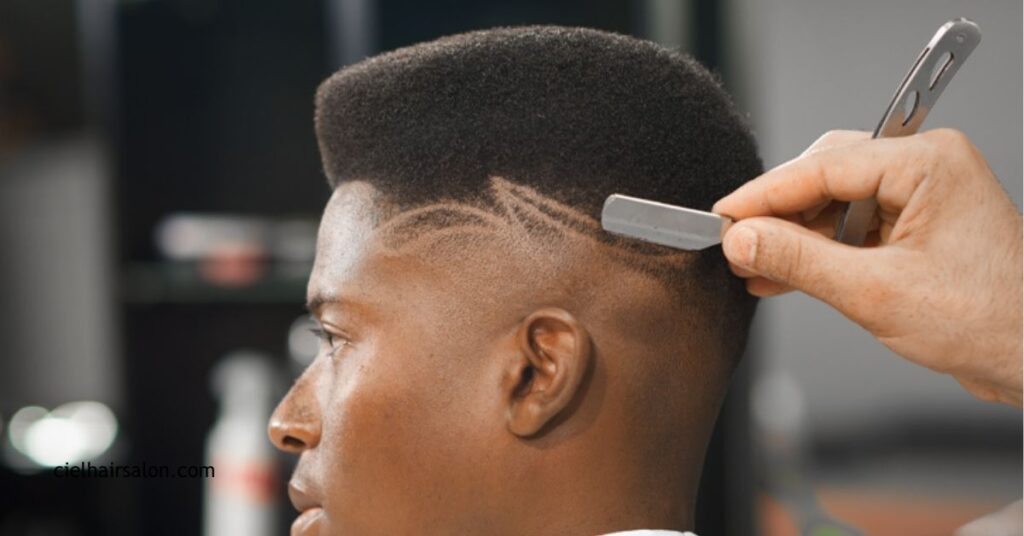
Stay ahead of the curve with modern fade trends that add edge and character to your hairstyle. High fades create a bold contrast by starting above the temples, making a strong statement that’s perfect for contemporary styles. Incorporating textured tops or pompadours with a high fade delivers a ever-changing and stylish appearance. Mid fades also play into modern aesthetics by offering a balanced look that works well with trendy comb-overs and layered cuts, ensuring your hairstyle remains fresh and up-to-date.
Versatile Looks

Achieve flexibility in your hairstyle with versatile fade options that adapt to different settings and personal preferences. Mid fades strike the perfect balance between subtlety and drama, making them ideal for both casual and professional environments. They pair seamlessly with various styles, including textured tops and comb-overs, allowing you to switch up your look effortlessly. Also, versatile fades like the Drop Fade and Deep Dart Fade provide the adaptability needed to experiment with different hair lengths and styles, ensuring your haircut can evolve with your changing tastes.
Guide Fade Haircuts Infographic

Creating an effective infographic for fade haircuts involves careful planning and design. Here’s how we can ensure it stands out and delivers valuable information.
Key Elements To Include
We include various types of fade haircuts to provide a comprehensive overview:
- Classic Fade: Features a healthy length on top with a gradual taper to the neckline. Clipper guards used are #3, #2, #1, and 0.
- Mid Fade: Ideal for thick hair, this style maintains volume on top while offering precise clipping on the sides. Clipper guards include #3, #2, and #1.
- Low Fade: Starts lower on the head, perfect for curly, wavy, or fluffy hair. Uses clipper guards #4, #3, #2, and #1.
- Taper Fade: Shows a smooth decrease in hair length from the back of the neck to the top of the head.
- High Fade: Creates a bold contrast between the back, sides, and crown, often achieved with a foil shaver.
- Scissor Fade: Utilizes scissors over a comb for a subtle style, ideal for those preferring less close clipping.
Design Tips For Clarity
We prioritize clarity by organizing information logically:
- Hierarchy: Arrange elements from general to exact, ensuring the most important information stands out.
- Consistency: Use uniform fonts and sizes to maintain a cohesive look throughout the infographic.
- Spacing: Provide ample white space to avoid clutter, making the infographic easy to read.
- Icons and Illustrations: Incorporate simple visuals to represent different fade types, improving understanding.
Utilizing Colors And Labels
- Color Coding: Assign distinct colors to each fade type, helping viewers quickly differentiate between styles.
- Readable Labels: Ensure all text is clear and legible, using contrasting colors for text and background.
- Highlighting Key Information: Use bold or vibrant colors to emphasize essential details, such as clipper guard numbers.
- Legend and Keys: Include a legend to explain color codes and symbols, ensuring the infographic is user-friendly.
Choosing The Right Barber For Your Fade

Qualities To Look For
Finding the perfect barber starts with identifying key qualities. Experience and expertise matter; a seasoned barber knows the intricacies of different fade types like low, mid, and high fades, ensuring a cut that suits your unique features. Attention to detail is essential, as precise trimming creates a seamless fade that looks sharp and polished. Finally, good reviews and recommendations can guide you to a reputable barber, reflecting their skill and customer satisfaction.
Questions To Ask Before Booking
Before booking an appointment, asking the right questions can make all the difference. How long have you been cutting fades? ensures the barber has exact experience. Can I see your portfolio? allows you to assess their style and skill level. What products do you use for maintenance? helps you understand how to keep your fade looking fresh. These questions help you gauge if the barber is the right fit for your desired look.
Building A Relationship With Your Barber
Creating a strong relationship with your barber enhances your haircut experience. Communicate your preferences clearly to ensure they understand your vision. Provide feedback regularly so they can adjust techniques to better suit your needs. Be punctual and respectful to build mutual trust and respect. A good rapport with your barber means consistent, high-quality fades customized just for you.
Conclusion
Transforming your look with the perfect fade is easier than ever with our detailed infographic. We provide the insights you need to choose a style that matches your personality and lifestyle. By understanding the different fade types and the techniques involved, you gain the confidence to communicate your vision clearly with your barber.
Maintaining your fade ensures it stays sharp and stylish over time. We’re here to support you every step of the way, offering tips and resources to keep your haircut looking its best. Embrace the versatility of fade haircuts and let our guide help you achieve a fresh and polished appearance that stands out.
Frequently Asked Questions
What is a fade haircut?
A fade haircut is a versatile style where the hair gradually transitions from short to longer lengths. This seamless blend typically starts near the bottom of the sides and back, fading upward to the top. Fades can vary in height, such as low, mid, or high, each offering a distinct look. They are popular for their clean, polished appearance and adaptability to different hairstyles and face shapes. Fades are suitable for both casual and professional settings, making them a favorite choice for many looking to enhance their hairstyle with a modern, stylish edge.
What are the different types of fade haircuts?
There are several types of fade haircuts, each offering a unique look:
- Low Fade: Subtle transition starting just above the ears, offering a polished appearance.
- Mid Fade: Balanced fade that starts midway up the sides, versatile for various styles.
- High Fade: Bold contrast with the fade beginning higher on the head, making a strong statement.
- Taper Fade: Classic, neat fade with minimal length difference, ideal for a timeless look.
- Drop Fade: Fades around the temples, creating a curved shape towards the back.
- Scissor Fade: Incorporates scissors with clippers for a softer, blended finish.
Each type caters to different preferences and face shapes, allowing for personalized styling.
How do I choose the right fade for my hair type and face shape?
Choosing the right fade depends on your hair texture, face shape, lifestyle, and personal preference.
- Hair Texture: Thicker hair may benefit from a high or mid fade to manage volume, while finer hair works well with a low or taper fade for a cleaner look.
- Face Shape:
- Round faces look great with high fades to add height.
- Square faces suit mid or taper fades to soften angles.
- Oval faces can pull off almost any fade style.
- Lifestyle: Consider how much maintenance you’re willing to commit to and the settings you frequent. Consulting with a barber can help you find the most flattering and practical fade style.
What tools are essential for creating a perfect fade?
To achieve a flawless fade, you’ll need the right tools:
- Clippers: Quality clippers with adjustable guards are crucial for precise cuts.
- Scissors: For blending and detailing the top and sides.
- Combs: Different sizes help in achieving even sections and smooth transitions.
- Handheld Mirror: Essential for checking the back and ensuring symmetry.
- Clipper Guards: Various guard lengths allow for gradual fading.
Proper techniques and maintaining your tools will enhance the quality of the fade, ensuring a professional and polished look every time.
How can I maintain my fade haircut?
Maintaining a fade haircut involves regular upkeep and proper hair care:
- Regular Trims: Schedule trims every 2-4 weeks to keep the fade sharp and prevent it from looking unkempt.
- Washing Techniques: Use a good shampoo and conditioner to keep hair clean and healthy without over-washing, which can cause dryness.
- Moisturizing: Apply a light moisturizer to keep the hair and scalp hydrated.
- Minimal Styling Products: Use light styling products to enhance the look without weighing the hair down.
- Heat Protection: If using heat tools, apply a heat protectant to prevent damage.
Consistent maintenance ensures your fade remains fresh and stylish, extending the time between barber visits.
What are some popular styling options with fade haircuts?
Fade haircuts are incredibly versatile and can be paired with various styles:
- Classic Pompadour: Comb the longer top hair back for a timeless, elegant look.
- Textured Top: Adds volume and a modern, edgy feel.
- Undercut Fade: Features a stark contrast between the short sides and longer top.
- Temple Fade: Focuses the fade around the temples, perfect for enhancing a clean, sharp appearance.
- Deep Dart Fade: Offers a unique blend with different lengths for a distinctive style.
These options allow you to customize your fade to suit personal tastes and trends, making it easy to refresh your look.
How do I create an effective infographic for fade haircuts?
Creating an effective infographic for fade haircuts involves careful planning and design:
- Content: Include different types of fades, their features, and clipper guard numbers.
- Design Elements: Use clear hierarchy, consistent spacing, and relevant icons or illustrations.
- Color Coding: Apply distinct colors for each fade type to enhance readability and visual appeal.
- Labels: Clearly label each section to ensure information is easy to understand.
- Simplicity: Keep the design uncluttered, focusing on key information to convey the message effectively.
A well-designed infographic simplifies complex information, making it accessible and engaging for readers looking to choose the right fade.
What should I look for when choosing a barber for my fade haircut?
Selecting the right barber is essential for achieving a great fade:
- Experience: Look for barbers with extensive experience in fade haircuts and a strong portfolio.
- Attention to Detail: A good barber pays close attention to the transitions and overall precision of the fade.
- Positive Reviews: Check online reviews and ask for recommendations to ensure reliability and quality.
- Communication Skills: Choose a barber who listens to your preferences and offers expert advice.
- Hygiene and Professionalism: Ensure the barber maintains a clean and professional environment.
Building a strong relationship with your barber through clear communication and mutual respect can lead to consistently high-quality, customized fades.
How can I communicate my desired fade style to my barber?
Clear communication is key to getting the fade you want:
- Bring Reference Photos: Visual aids help convey the exact style and details you’re aiming for.
- Be Specific: Describe the type of fade (low, mid, high) and the length you prefer on top and sides.
- Discuss Details: Talk about how you want the transition to look and any particular areas to focus on.
- Ask for Suggestions: A skilled barber can offer advice based on your hair type and face shape.
- Clarify Maintenance: Discuss how often you’ll need trims to keep the fade looking fresh.
Effective communication ensures your barber understands your vision, resulting in a satisfying and tailored fade haircut.
What are the latest trends in fade haircuts?
Current trends in fade haircuts blend classic styles with modern twists:
- High Fades with Textured Tops: Combining a bold high fade with messy, textured hair on top for an edgy look.
- Drop Fades: Featuring a curved fade that drops behind the ear, adding uniqueness to the style.
- Scissor Fades: Mixing clippers and scissors for a softer, more blended finish.
- Undercut Fades: Maintaining longer hair on top with sharply faded sides, offering a stark contrast.
- Beard and Fade Combinations: Integrating the fade with a well-groomed beard for a cohesive and stylish appearance.
These trends highlight the versatility of fade haircuts, allowing for personalized and contemporary styles that cater to diverse preferences.
How do I protect my fade haircut from damage?
Protecting your fade involves proper care and mindful styling:
- Use Heat Protectants: Apply before using heat tools to prevent hair damage.
- Avoid Over-Washing: Keeps the natural oils intact, maintaining hair health.
- Moisturize Regularly: Prevents dryness and keeps the hair and scalp hydrated.
- Limit Styling Products: Use minimal products to avoid buildup and maintain a natural look.
- Protect from UV Rays: Wear hats or use hair products with UV protection to shield hair from sun damage.
By following these tips, you can maintain the integrity and appearance of your fade, ensuring it stays healthy and looking sharp.
How often should I get a fade haircut?
The frequency of fade haircuts depends on how quickly your hair grows and the desired sharpness of the fade:
- Every 2-4 Weeks: Ideal for maintaining a crisp, clean look and keeping the fade well-defined.
- More Frequent Trims: Necessary if you prefer a very tight fade that needs regular upkeep.
- Less Frequent Visits: Suitable if you allow for a bit of growth between trims and prefer a more relaxed fade.
Discuss with your barber to determine the best schedule based on your hair growth rate and the specific fade style you have. Regular maintenance ensures your fade remains stylish and well-executed.





